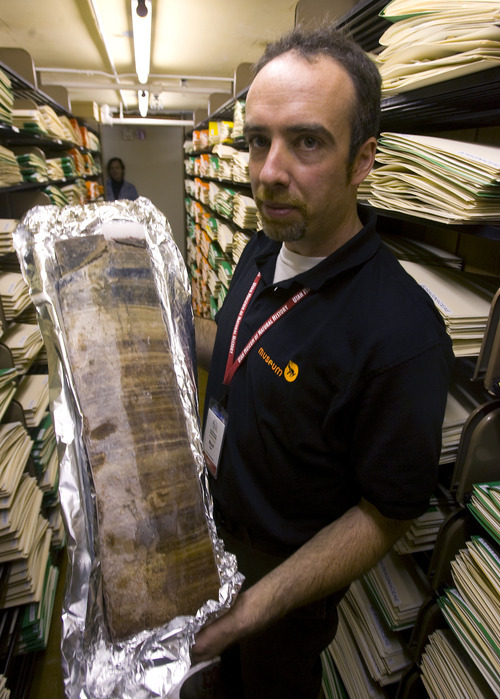This is an archived article that was published on sltrib.com in 2012, and information in the article may be outdated. It is provided only for personal research purposes and may not be reprinted.
Across the New World, landscape burning tapered after the arrival of Columbus, leading many to believe that the decline was connected to the deaths of Native Americans exposed to unfamiliar diseases carried by European ships.
Pre-Columbian Indians are known to have deliberately set large fires to enhance the agricultural productivity of land, so the massive population collapse that began in 1492 could explain why fire declined in the Americas.
But University of Utah geographer Mitchell Power contends the charcoal record assembled from lake beds around the world tells a different story. A cooling climate — during a period dubbed the Little Ice Age — was the real driver of decreased burning, according to Power.
"We are challenging the debate, suggesting that the anthropogenic [human-caused] signal is not as robust as many thought it to be. The decrease in fire started before the population collapse," said Power, the principal author of a study to be published online this week. "That's a key finding. Climate is driving fire on global and continental scales."
Power coordinated research data from at least 18 universities, which provided analyses of sediment cores from 600 lakes around the world, covering 2,000 years.
Among those who contributed was University of Texas geographer Robert Dull, who does not support the paper's conclusions. Dull contends it glosses over important geographic differences across the Americas.
Unlike today's United States, the warm, humid lands from southern Mexico to Peru were intensively cultivated by pre-Columbian Indians and lightning-sparked fire has been rare.
"They sugar-coat it and make it seem like one size fits all," said Dull, who asked to have his name removed from the long list of co-authors.
In other published studies, Dull and colleagues build a case that the disappearance of Native Americans allowed forests to reclaim tropical lands they had turned into croplands through burning. This was because few survived small pox and other epidemics to keep lighting fires.
Still, Dull believes Power's findings are valid for much of the arid western United States, where lightning is a common igniter of wildfire and cultivation was rare.
Power spends his field seasons on the West's mountain lakes tapping sediments that have accumulated for thousands of years. Charcoal is a proxy for the frequency and intensity of fire on surrounding terrain.
Core samples contain pollen, charcoal and other information scientists can use to reconstruct past vegetation and climates.
Power, who manages the Natural History Museum of Utah's Garrett Herbarium, is interested in how landscapes responded to the Little Ice Age, believed to have begun between 1200 and 1500 AD and persisted until 1800. This knowledge can help science understand today's warming trends, which have been linked to drought and increased wildfire in the West.
"In a world where climate is rapidly changing we need to pay more attention to this relationship between climate and fire," Power said.
As manager of the Global Charcoal Database, Power has standardized data about charcoal particles so that it can be compared across continents.
Dozens of scientists around the world study the charcoal record, but they quantify charcoal particles differently. As manager of the Global Charcoal Database, a central gathering place for this information, Power has standardized data about charcoal particles so that it can be compared across continents.
The relative abundance of charcoal in various sediment layers is a proxy for the frequency and intensity of fire on surrounding terrain. Power's new study has found that fire not only decreased in the New World around 1350, but in the Eastern Hemisphere as well. Europe and Asia were not subject to major population crashes outside the Black Death, the pandemic that wiped out one-third of Europe's population between 1348 and 1350.
Power said the data show human population drops could have accelerated reduction in fire, but they were not the cause. The simple explanation is that colder landscapes are less able to burn.
"In a cooler atmosphere, you tend to get reduced convection, so you get reduced thunderstorms and ignition from lightning," he said. "Cooler climate also tends to maintain high levels of fuel moisture and soil moisture."
He and his colleagues also found that fire declines were hardly limited to heavily populated regions. The phenomenon stretched from the boreal forests of northern Canada to the Patagonian tip of South America.
"You have to go back 4,000 years to see this big a decline in fire," Power said. "Climate alone explains the decrease."
His study is to be published in the August edition of The Holocene. The journal's title is a reference to the most recent geological epoch, covering the last 12,000 years.Funding came from the National Science Foundation and the Natural History Museum of Utah.



